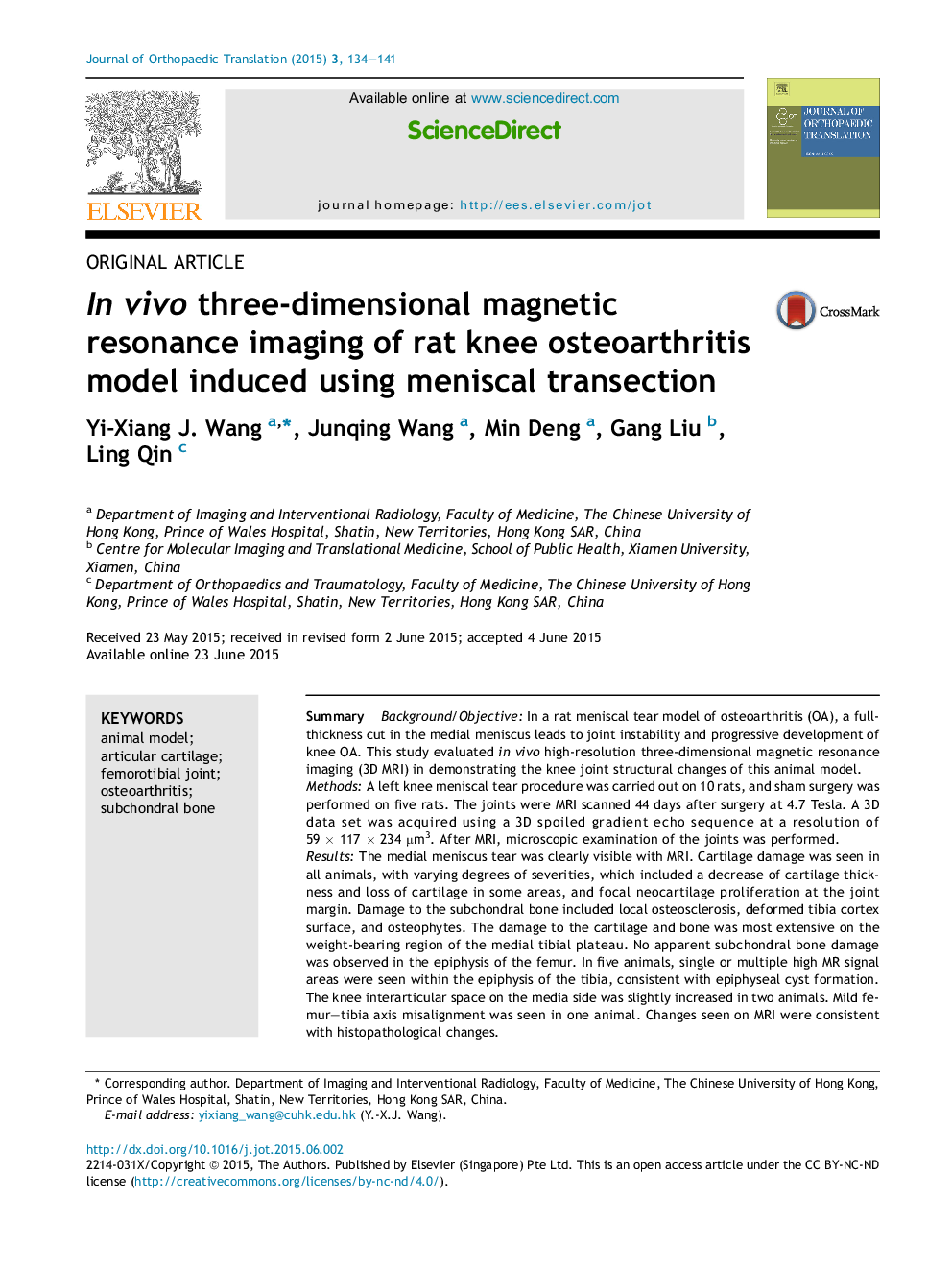| کد مقاله | کد نشریه | سال انتشار | مقاله انگلیسی | نسخه تمام متن |
|---|---|---|---|---|
| 2740007 | 1148451 | 2015 | 8 صفحه PDF | دانلود رایگان |

SummaryBackground/ObjectiveIn a rat meniscal tear model of osteoarthritis (OA), a full-thickness cut in the medial meniscus leads to joint instability and progressive development of knee OA. This study evaluated in vivo high-resolution three-dimensional magnetic resonance imaging (3D MRI) in demonstrating the knee joint structural changes of this animal model.MethodsA left knee meniscal tear procedure was carried out on 10 rats, and sham surgery was performed on five rats. The joints were MRI scanned 44 days after surgery at 4.7 Tesla. A 3D data set was acquired using a 3D spoiled gradient echo sequence at a resolution of 59 × 117 × 234 μm3. After MRI, microscopic examination of the joints was performed.ResultsThe medial meniscus tear was clearly visible with MRI. Cartilage damage was seen in all animals, with varying degrees of severities, which included a decrease of cartilage thickness and loss of cartilage in some areas, and focal neocartilage proliferation at the joint margin. Damage to the subchondral bone included local osteosclerosis, deformed tibia cortex surface, and osteophytes. The damage to the cartilage and bone was most extensive on the weight-bearing region of the medial tibial plateau. No apparent subchondral bone damage was observed in the epiphysis of the femur. In five animals, single or multiple high MR signal areas were seen within the epiphysis of the tibia, consistent with epiphyseal cyst formation. The knee interarticular space on the media side was slightly increased in two animals. Mild femur–tibia axis misalignment was seen in one animal. Changes seen on MRI were consistent with histopathological changes.ConclusionMRI offers in vivo information on the pathogenesis change of rat knee OA induced with menisectomy. It can serve as a supplement technique to histology, as it is particularly useful for longitudinal follow-up of OA model development.
Journal: Journal of Orthopaedic Translation - Volume 3, Issue 3, July 2015, Pages 134–141